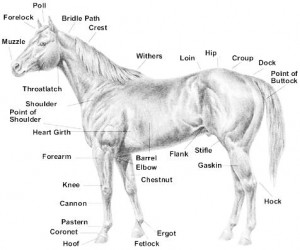 I’m no expert on horse conformation. I sometimes look at a horse and think, “Wow—he’s beautiful!” and totally miss that his shoulder is too straight or his stifle is weak. For the average horse lover, conformation isn’t a big deal. We just love looking at horses. But for a serious rider, it’s one of the most important things to look for in a horse. This article is intended to point out some of the most glaring faults in horse conformation.
I’m no expert on horse conformation. I sometimes look at a horse and think, “Wow—he’s beautiful!” and totally miss that his shoulder is too straight or his stifle is weak. For the average horse lover, conformation isn’t a big deal. We just love looking at horses. But for a serious rider, it’s one of the most important things to look for in a horse. This article is intended to point out some of the most glaring faults in horse conformation.
Uphill/Downhill
One of the easiest things to spot is if a horse is built uphill or downhill. This is seen by making an imaginary line from the highest point of the withers to the highest point of the hindquarters. If the line isn’t parallel, the horse is either uphill (higher at the withers) or downhill (higher at the hindquarters). A horse with a slight uphill build, as in the photo below, is desirable for some disciplines such as dressage or show jumping, as its conformation affects its movement and athleticism.
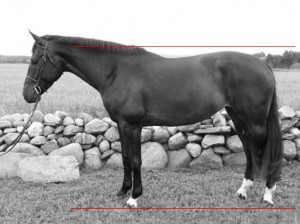
The growth in a yearling horse can sometimes be sporadic, making him uphill or downhill, and this sometimes evens out as the horse reaches full maturity. But the downhill build is never desirable in judging a horse’s conformation, because the horse’s movement will be affected—he will likely be heavy on the forehand and lack the strength and agility necessary for a good riding horse. This young horse shows a definite downhill build:
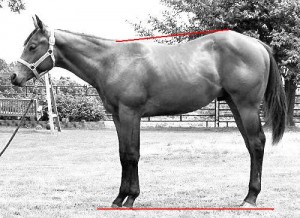
Swayback
Another very obvious conformation flaw in horses is a swayback. Some horses are born with this defect, while others develop it later on as a result of poor bone construction and old age. A swayback may not render the horse completely useless, but I would personally feel very reluctant to ride a swaybacked horse. I think a horse that’s worked all his life and has developed a swayback from old age has earned his right to be put out to pasture and loaf around. This old horse has a swayback:
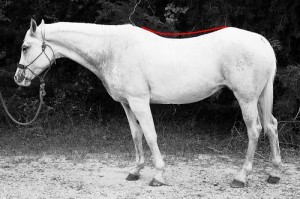
Straight Shoulders
This one is harder for me to spot sometimes, but a straight-shouldered horse is not going to be much fun to ride, especially if there are other defects such as too long of a back. The straight shoulder will result in a choppy front stride and the impact on the front legs can result in unsoundness. A horse with a good angle on his shoulder will be smoother, stronger, more elastic in movement, and overall more desirable. Again, for other disciplines such as driving or some gaited breeds, this may not apply, but for a riding horse you want his shoulder to show some slope and for the withers to be set a little behind his elbow. Compare these two photos of equally beautiful horses. At first glance, they both appear conformationally balanced. But the first horse is much straighter in the shoulder and will not be as good a riding horse as the second.
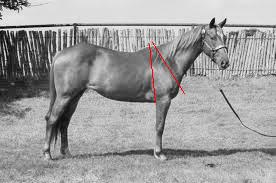
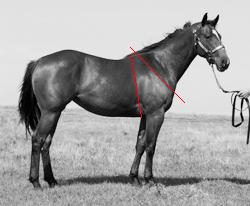
Problem Withers
Another problem area in some horses is the withers. A horse can have too much and not enough. Too high of withers is going to cause saddle fitting problems and the horse could suffer from soreness. Too flat of withers, otherwise called mutton withers, will make it hard to keep your saddle from turning and/or slipping forward. A good horse will have somewhere in between these two extremes:
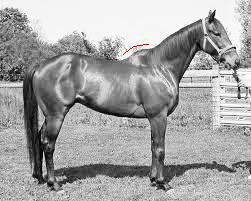
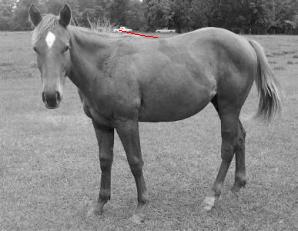
Ewe Necked
A horse with a ewe neck shows a dip in front of the withers, before the neck rises upward. This is a horse with a ewe neck:
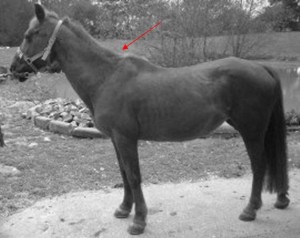
Camped Out Behind
This conformation is somewhat acceptable in certain breeds (I see a lot of gaited horses with camped-out hind legs, which probably adds smoothness and swing to their walk) but in a stock horse, it is a defect. You can see it in the hind legs of a horse, when from the hock down the legs are naturally set behind the point of the horse’s hindquarters. If you draw a line straight down parallel with the horse’s tail, the line should touch the point of the horse’s hind end, the point of the hocks, and follow closely with the cannon bones and the fetlocks. Notice this photo, how the hind legs are further back than the hindquarters, this horse is camped out behind:
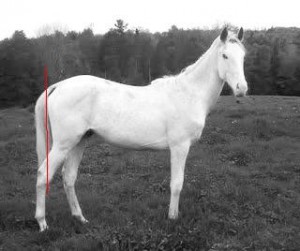
Over At The Knee
Some horses will show a definite set-back just under their front knee, or even an appearance of their front knees being bent while viewed from the side. Look at these two photos that show horses with knee problems that will certainly hinder their movement and soundess:
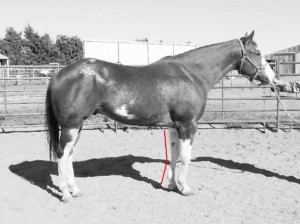
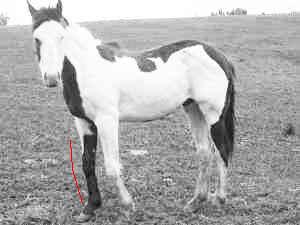
Long Pasterns, Cow Hocks, Toed Out
This horse displays three leg defects at once! His pasterns are too long, which can result in dropped pasterns or lameness. He is cow hocked, where the hind legs almost touch each other at the hock. And he is toed out–you can easily see this on his hind hooves in this photo, but if you viewed him straight-on from the front, I think all four of his feet would be splayed outward.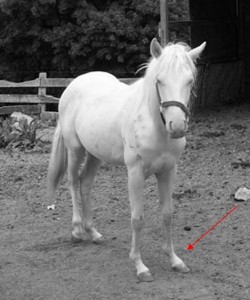
Sickle Hocked and Post Legged
These are the two extremes of the set of a horse’s hocks. The rear cannon bones should follow a straight plumb line down from the point of the horse’s hindquarters. If the cannon bones reach forward in front of the line, the horse is sickle hocked, as shown in the first photo. If the horse’s legs are straight from the hip down, with no backward angle in the tibia, the horse is called post-legged, as shown in the second photo:
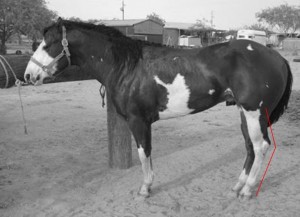
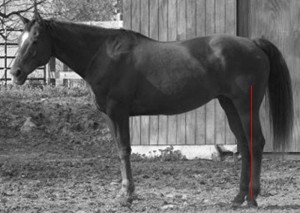
I love horses, and can still see beauty in the ugliest one. But a horse that lacks good conformation is not going to be the best investment if you’re wanting a riding horse. When you’re looking at horses, really study them for their athleticism and the longevity of their health. The adage “no hoof, no horse” is true—even the smallest defect in conformation can result in the horse needing costly veterinary work or even needing to be put down. So a knowledge of basic conformation flaws is a good thing to arm yourself with if you’re a horse enthusiast.
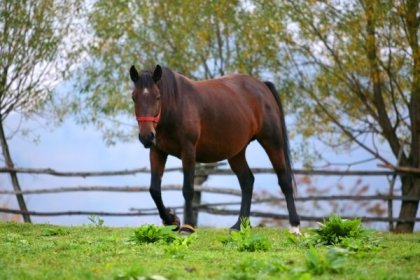

{ 2 comments }
What a great article! You’re welcome to promote it on our Tuesday Horse Blog linky http://www.RochesterTrailRiders.com
My favorite page in Horse & Rider magazine is the Conformation Clinic, where you compare 3 horse photos and rank them best to worst. Then you read the judges comments on them, and it really helps to visualize each horse and learn what the judges are actually seeing when they look at a particular horse. I have a lot to learn on the subject—horse conformation is one of my favorite horse topics!